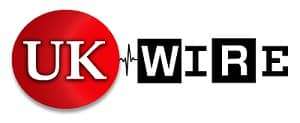- AUGUST 28, 2020
- Psychedelics Have Been More Deeply Entrenched in Our Current Culture Than We Have Previously Believed, Coming About as a Result of the Counterculture Influence of LSD That Began in the Late 1960s
- Not Long After, Businesses That Would Go on to Changed the World Such as Apple and Microsoft, Began Putting Down Their Roots in Silicon Valley in Palo Alto, California
Legendary computer scientists and developers who built the computer industry were devotees of LSD, including the founders of current-day tech giants Microsoft (NASDAQ: MSFT) and Apple (NASDAQ: AAPL), Bill Gates and the late Steve Jobs. (In a Playboy magazine interview, Gates skirted the question but implied that he tried it: “My errant youth ended a long time ago.”)
But there were others.
For example, in the book The Psychedelic Explorer’s Guide, author and psychedelics pioneer James Fadiman wrote that two Nobel laureates used LSD, and attributed it to breakthroughs in their human DNA research: Francis Crick reportedly said that the inner vision of the double helix of DNA came from LSD, and chemist Kary Mullis used LSD to help develop the polymerase chain reaction to amplify specific DNA sequences.
Steve Jobs told his biographer, Walter Isaacson, that he wanted to be one of those guys, like Edwin Land of Polaroid, who stood at the intersection of humanities and science, something that the biographer wrote would be the “key to creating innovative economies in the 21st century.”
Jobs admitted to meditating and taking psychedelics in the 70s while getting deeper into Buddhism.
During the early 60s, Doug Engelbart, a computer visionary and former Navy radar operator who experimented with LSD, founded the Augmentation Research Center (for augmenting human intellect) within Stanford University (called the Stanford Research Institute, or SRI), an organization that developed the computer mouse, graphical user interfaces, text editing, hypertext, networked computers, email, and videoconferencing. The center worked with NASA and the Defense Advanced Research Projects Agency (DARPA) before being purchased by McDonnell Douglas.
Psychedelics influenced the entire cultural scene in the San Francisco Bay Area during the late ’60s and early ’70s, eventually bringing the computer geeks together with hippies in a collaborative spirit to explore other dimensions of product development related to the computer.
The psychedelics magicians in the Bay Area at that time included Bob Jesse, a computer engineer and vice president of business development at Oracle (NYSE: ORCL), who made it his mission to revive the science of psychedelics, according to Michael Pollan’s book How to Change Your Mind. Jesse reportedly “found his vocation in the wake of transformative psychedelic experiences” that convinced them that these substances had “the potential to heal not only individuals but humankind as a whole.”
Another psychedelics stand out in Silicon Valley was Myron Stolaroff, an electrical engineer who was the president for strategic planning at Ampex, which was one of the first tech businesses in Silicon Valley. Stolaroff took LSD in the late 50s and tried to convince others that Ampex should become the world’s first “psychedelic corporation,” according to Pollan’s book.
He later left to establish the International Foundation for Advanced Study (where Fadiman worked as well) to explore the potential of LSD, processing some 350 artists, engineers, architects and scientists in the area, including revolutionary computer engineers such as William English.
Pollan also cited Peter Schwartz, an engineer who is now the vice president of government relations and strategic planning for Salesforce.com (NYSE: CRM), who witnessed what was going on in the 1970s as more Silicon Valley engineers were taking LSD. He said that several of the early computer engineers relied on LSD in designing circuit chips, especially in the years before they could be designed on computers, because “you had to be able to visualize a staggering complexity in three dimensions, hold it all in your head. And they found that LSD could help.”

As time goes on, LSD has been given more credence as a real driving influence behind computer engineering. LSD promoter and counter culture guru Timothy Leary believed that personal computers had become the new LSD. “The PC is the LSD of the 1990s,” he said, according to an article in the New Yorker.
After a delay of 40 years in LSD research which was stalled out because of federal drug scheduling restrictions (the first double-blind, randomized, placebo-controlled pilot study of LSD was published in 2014), researchers are nevertheless accelerating their work trying to figure out how LSD works to expand problem-solving and other cognitive functions.
One older study in 1966 explored the effects of LSD and mescaline on creative problem-solving ability, based on the frequently reported similarities between creative and psychedelic (drug-induced, consciousness-expansion) experiences.
Twenty-seven professionally employed males were given a single psychedelic experience in 1 of 7 small groups, following extensive selection and preparatory procedures. This drug-induced problem-solving session was carefully structured with a particular focus on establishing creative activity.
Findings based on tests of creativity, subjective reports, self-ratings, and the utility of problem solutions suggested that psychedelic agents seem to facilitate creative problem-solving, particularly in the “illumination phase.” The results also suggest that various degrees of increased creative ability may continue for at least some weeks after a psychedelic problem-solving session.
A more recent study in 2018 went further. It examined the effects of psychedelic truffles on two creativity-related problem-solving tasks: the Picture Concept Task, assessing convergent thinking; and the Alternative Uses Task, assessing divergent thinking. Researchers found that both convergent and divergent thinking performance improved.
These sorts of cognition-enhancing results are inspiring more Silicon Valley workers to try out micro-dosing psychedelics.
Wired magazine reported that Silicon Valley workers are taking psychedelics today—micro-doses of LSD or psilocybin every few days—to help with their work performance, saying that it “induces a ‘flow state,’ aids in lateral thinking, and encourages more empathetic interpersonal relations.”
These sort of self-administered brain management and enhancement treatments also called “bio-hacking,” and do-it-yourself biology seems to play off of the Silicon Valley thinking that anything is possible.
Making and taking psychedelics with bio-hacking has become a movement that is gaining momentum not only in Silicon Valley but elsewhere where “outside the box” thinking is rewarded, as novices and amateurs working in experimental life sciences, computer technology, psychedelics, and genetic engineering try to make themselves better and more productive humans.
Some of these projects are organized by biology community lab spaces, such as the Santa Clara-based BioCurious and Oakland-based Berkeley Biolabs, working on projects such as bio-printers, which is an open-source do-it-yourself cell printer; and genetically engineering a yeast cell to make insulin.
But there is a downside. Less organized amateur so-called garage-lab bio-hacking has authorities worried. These sorts of bio-synthesizing experiments can lead to dangerous organisms being released into the world or getting into the hands of bioterrorists. And during a time of a global pandemic, perhaps there should be another level of monitoring of open source information access for biotechnology and biosynthesis work.
Featured image source: HBO’s Silicon Valley
Follow TCI on Social Media: Facebook | Instagram | Twitter | LinkedIn | Investor Group
Follow Psychedelic Profits on Social Media: Facebook | Twitter | LinkedIn | Investor Group
Source: The Cannabis Investor
The post How and Why Psychedelics Created the Silicon Valley Phenomenon appeared first on Trax News.


